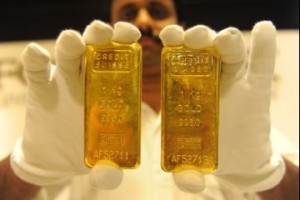 People stumble across shiny, yellow treasures all the time while scouring through yard sales or flea markets. And if you’ve ever been to such a sale, you know they can get real busy.
People stumble across shiny, yellow treasures all the time while scouring through yard sales or flea markets. And if you’ve ever been to such a sale, you know they can get real busy.
There’s no time for second guessing or your would-be treasure could end up in someone else’s hands. This is where knowing how to tell real gold from fake comes in handy.
Of course, the surest way to tell whether gold is real or fake is to take it into a jeweler or gold buyer like Toronto Gold in person. But, we realize that’s not always an available option.
Truth is, there are several tests you can conduct on your own to determine gold authenticity. Some tests require special tools, but we’re going to outline some of the simpler ones that don’t require precise scales, chemicals, x-rays, ultrasounds, etc.
Let’s dive in!
Step 1: Bite Down On It
If it’s real gold, your teeth will form small dents in the metal. Fake gold won’t dent at all on a bite test! Now, before you chip a tooth, remember that gold is a soft metal so there’s no need to bite down very hard.
Step 2: Check For Stamps
Examine the piece of metal in question for markings indicating a carat value. If the piece of gold was made in the U.S., there will surely be a stamp or other marking visible somewhere on the gold item such as 916, 750, 18kt, 14kt, etc. Remember, not all gold carries a mark – especially gold items made outside the U.S. This test is hit or miss.
Step 3: If It’s Green or Black, Put It Back!
Look carefully at the surface of the metal for any small green discoloration or black spots. If you find some, that’s a sure sign that it’s fake gold.
Edges and clasps are where you can most often find spots due to more friction in those areas. If you have access to a magnifying glass, that can greatly help identify discoloration and spots.
Step 4: Feel By Weight
Fake gold feels lighter than real gold and that is because gold is heavier than almost all other metals. This is not the most reliable test, but if the gold item feels practically weightless then that is one indication that the item is fake.
Step 5: The Bigger, The Faker
Anytime you come across a big item, let’s just say 10 ounces and up, you really need to have the item verified. There are a lot of counterfeits out there and the people behind them often “go for gold” because they want the payoff to be well worth the trouble and tremendous risk.
Bonus: Use A Magnet
Pure gold does not respond to a magnet. If you have access to a magnet, put the gold up against it and pull away. If there is no pull, or a very slight pull, then that’s an indication that it’s real gold. If there is a strong pull, then that’s bad news. Pro Tip: Magnets can often be found on a woman’s purse clasp!
Hopefully that will help you scour and search for gold with more confidence. With warmer months ahead, you can expect to see yard sale signs popping up all over the place!

